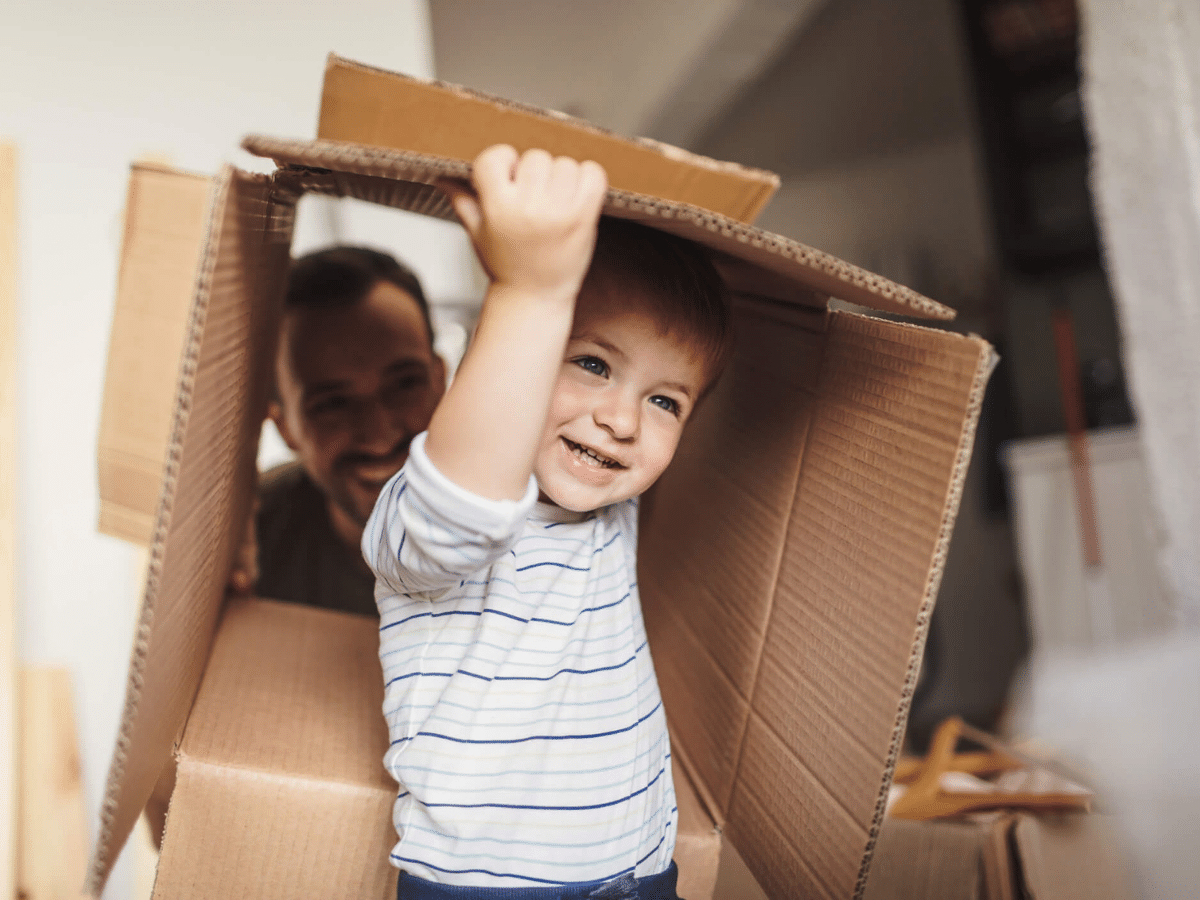We all know that moving home is one of life’s most stressful events, but add the terrible twos and teenage meltdowns and it’s a surefire way to turn an already stressful day into a dreaded one.
While moving home with children will never be a smooth and easy experience, there are ways you can help your child process the big change and settle into their new home quickly.
Preparing for the move
Include your child from the get-go. Whereas teenagers can pack their own belongings, encouraging younger children to get involved in the packing process can help them feel more involved in the move. Whether it’s labeling boxes or rounding up their own possessions, giving children an element of control will make it easier for them to come to terms with the scary idea of moving into a brand-new home.
You may also be tempted to have a clear out of your child’s old and worn belongings whilst packing. If you are planning on binning some items, it’s best not to make this too obvious – we all know how kids have a way of getting attached to a broken toy or a used-up sticker book when they know they are saying goodbye forever!

In it together
Whilst preparing to move into a new home, make sure to spend time with your child and try to ease any anxieties they may have about the move.
Packing items together will give you an opportunity speak to them about their feelings without the conversation seeming too forced, making this a great way to engage with teenagers who may be more reluctant to share their worries than their younger siblings.
If you sense your child is struggling with the move, let them know if you are also upset! For example, if they are sad about leaving friends, you can always say, “I am excited to move into a new home, but I am sad about leaving our neighbours.” Letting them know that you are in it together and may also have to make new friends can mean more to them than anything else you do to prepare them for the move.
Finally, make sure your child knows what is going to stay the same and what is changing, and always try and present the move in a positive light. Even young children can pick up on unspoken cues from you and adopt these anxieties.

Get exploring
If you’re not moving too far from your current place, it’s a great idea to take your child to see their new home ahead of the big day. By letting them see their new bedroom, the garden, the new park where they might play and their new school route, you can ease some of their anxieties about ‘the unknown’, make a list of all the new things they have in the area to look forward to, and get them excited to move into a new home.
Moving too far away to visit? Take a virtual trip! Google Street View is a great way to show them around their new neighbourhood from the comfort of their own bed.
On the day
Depending on how old your child is, you may want to consider enlisting childcare to make sure you can get moved in without having to work around feeding schedules, nappy changes, and nap times.
Also keep in mind that seeing their belongings packed up and their childhood home completely empty can be overwhelming for some children, so making sure they aren’t there to see it could be helpful. This means you can get their brand-new bedroom set up for when they arrive to make them feel more settled – how exciting!

If you’re unable to find childcare, it’s good to keep a separate bag of essentials to hand to keep your child going throughout the day including toys, entertainment, food, wipes, nappies, and medicine. Having toys and snacks to hand will be particularly useful when you’re overseeing the removal company and can’t give your child your full attention.
Once you’ve got the keys to your new home, make sure to prioritise unpacking your child’s belongings first. Having familiar items around them will help them to settle in and hopefully save a few tantrums!
Some parents swear by giving children a few days before using new bedding in their room, claiming that the old bedding helps children feel more settled in an unfamiliar environment. We think this is a conversation for you to have with your child - asking them for their opinions on small matters such as this may help them feel like they have a sphere of control around the move and ease some of their anxiety.

Probably the most important thing you can do to help your child adjust to their new home is sticking to a familiar routine. Letting them know that mealtimes, bath times, and bedtimes are still the same will reinforce the idea that the only thing that has changed is their home, and everything else is just as it was.
Finally, take time throughout the day to check in with your family and make sure everyone is okay. Your child’s experience of moving day can set the tone for how they adjust to their new home over the following weeks, so it’s best to acknowledge their feelings and reassure them where possible.
Need extra help planning your move? Get prepared for the big day with our handy moving checklist and advice on how to move home with a pet!